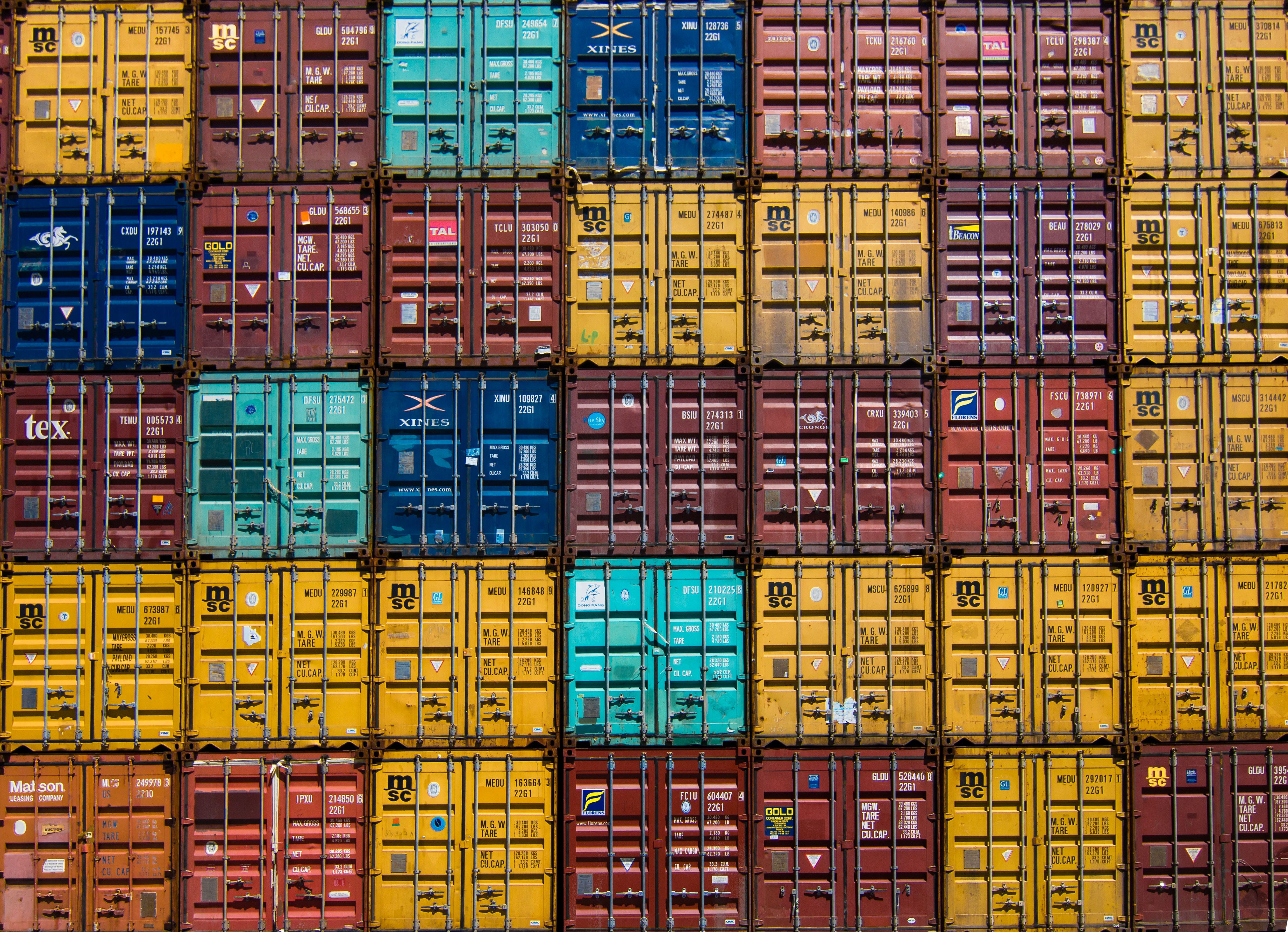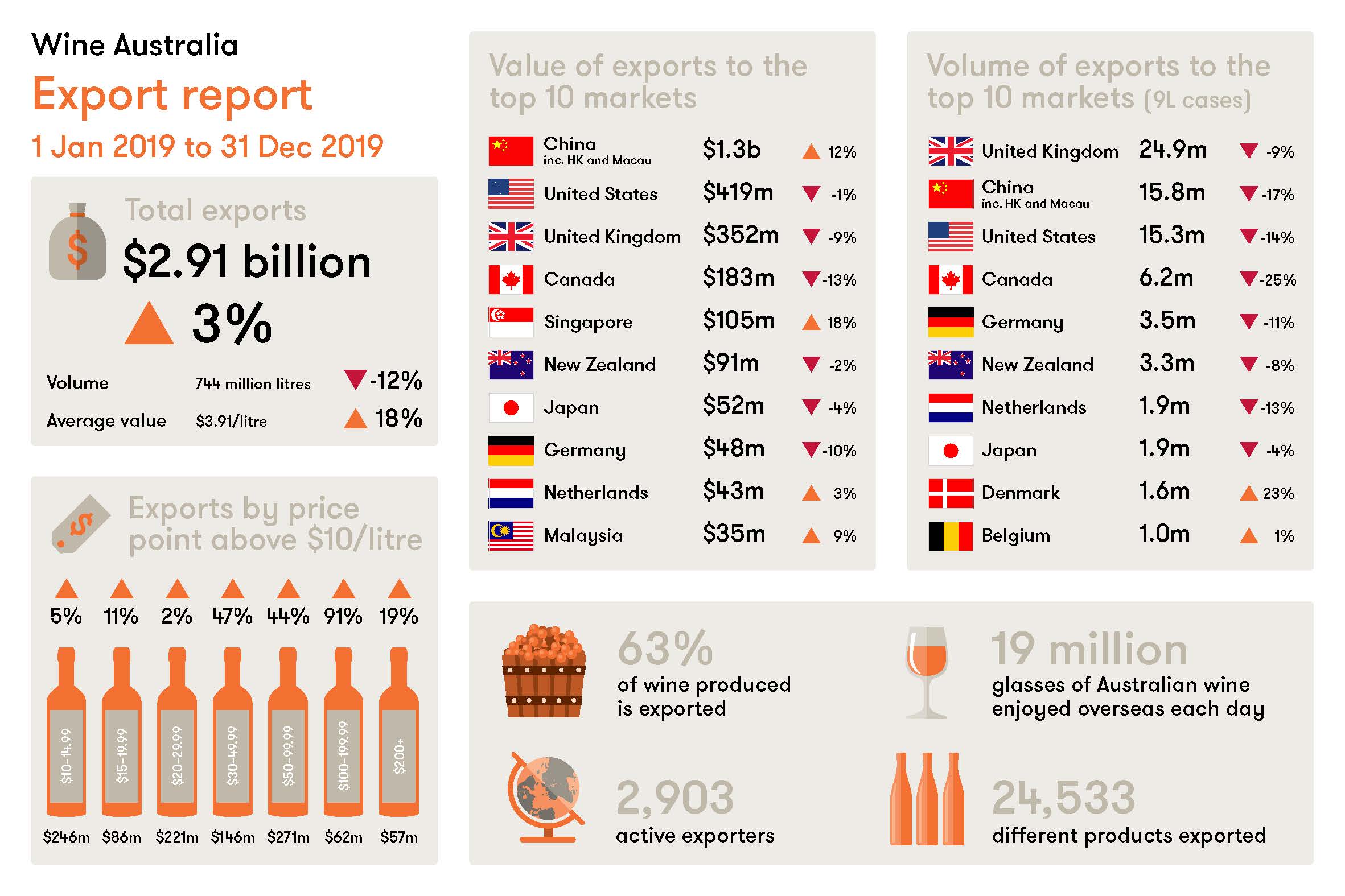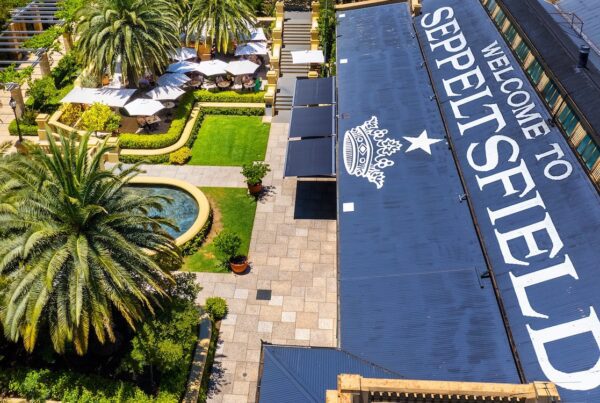
Exceptional growth in demand for Australian fine wine saw the total value of Australian wine exports grow by three percent to $2.91 billion in the 12 months to December 2019.
Exports of higher valued wines – those above $10 per litre free on board (FOB) – reached a record value of $1.1 billion, according to Wine Australia.
While the overall wine export situation for Australia looks positive, there are growing concerns about the impact of the coronavirus on wine sales with Chinese consumers avoiding restaurants and cafes.
“Looking ahead into 2020, we anticipate that coronavirus will have an impact on sales, particularly to China, but at this stage it is difficult to predict the degree of that impact,” Wine Australia CEO Andreas Clark said.
“Also, our first concern is people’s wellbeing in China and elsewhere and there will be time down the track to consider other impacts.”
Mr Clark said that the sector had focused on growing exports at higher price points and the results reflected the success of the strategy.
“Australian wine companies have been very active in our export markets and the value of exports has now increased for six consecutive years,” he said.
The total value of exports in 2019 was the second highest for a calendar year and value is approaching levels from before the Global Financial Crisis.
The average value of exported wine increased by 18 percent to $3.91 per litre FOB, the highest level since 2006.
“The volume of exports was down, with the decline heavily weighted towards lower price segments. The lower vintages in 2018 and 2019, together with lower inventory levels, meant that there was less wine available for export in 2019,” Mr Clark said.
Bottled wine shipments increased by seven percent in value to $2.4 billion and decreased in volume by five percent to 342 million litres (38 million 9-litre case equivalents). The increase in value was due to a 13 percent rise in the average value of bottled wine to a calendar year record of $7.04 per litre. This was principally the result of exceptional growth in Australia’s fine wine exports.
Unpackaged wine exports decreased by 12 percent in value to $488 million and decreased 18 percent in volume to 395 million litres. The average price of unpackaged wine increased by six percent to $1.24 per litre.
Local supply pressures are causing a decline in volume of both unpackaged and bottled exports. However, this decline is stronger for unpackaged wine, given the competitive nature of the commercial wine market. The Organisation Internationale de la Vigne et du Vin (OIV) reported that the volume of global wine production increased by 4.4 billion litres in 2018, with production increasing from the big three: Italy, France and Spain, as well as Chile.
Consistent with the trends in many key markets, Australian exports declined at lower price points and increased at the higher end.
The decline was strongest for exports below $2.50 per litre FOB, with value falling by 17 percent to $463 million.
Conversely, the growth was strongest at the high end, with a 22 percent increase in exports valued at $10 per litre or more FOB to a record $1.1 billion. By value, this is the biggest price segment of Australian wine exports, accounting for more than a third of the total value of exports. Exports in this segment have more than tripled since 2014.
The stand-out sub-categories were wines exported at $30 or more per litre FOB, highlighting the growing demand for Australia’s finest wines.
In the year ended December 2019, Australia exported wine to 120 markets. Asia was the growth centre for Australian exports. Exports to Northeast Asia increased by 11 percent to $1.37 billion and those to Southeast Asia increased by 17 percent to $200 million. The Middle East also saw growth, up four percent to $34 million.
The top five destinations by value were:
- China (including Hong Kong and Macau) was up 12 percent to $1.28 billion.
- USA, down one percent to $419 million.
- UK, down nine percent to $352 million.
- Canada, down 13 percent to $183 million.
- Singapore, up 18 percent to $105 million.
 Exports to China (including Hong Kong and Macau) in the 12 months to December 2019 increased by 12 percent in value to $1.28 billion, while volume declined 17 percent in volume to 142 million litres (15.8 million 9-litre case equivalents). Average value increased by 35 percent to $8.99 per litre FOB. Both value and average value are calendar year records.
Exports to China (including Hong Kong and Macau) in the 12 months to December 2019 increased by 12 percent in value to $1.28 billion, while volume declined 17 percent in volume to 142 million litres (15.8 million 9-litre case equivalents). Average value increased by 35 percent to $8.99 per litre FOB. Both value and average value are calendar year records.
While the total value of wine imported by China has declined, Australia has consolidated its position as the number one imported country of origin ahead of France. Australia’s export value to China continued growing in 2019 while the value of French imports continued the decline that commenced in 2018. Australia now holds a 35 percent value share of total wine imports compared with France with 29 percent. Chile is number one by volume but third in value with a 14 percent share. More than half of Chile’s exports to China are unpackaged, compared to 15 percent of Australia’s exports.
Exports to the USA decreased one percent to $419 million during the year ended December 2019. During that period, volume declined by 14 percent to 138 million litres (15.3 million 9-litre case equivalents), leading to a 15 percent increase in average value to $3.05 per litre FOB. This is the first year since 2008 that the average value has exceeded $3 per litre.
The six percent increase in the average value of bottled wine to $4.29 per litre is a result of the growth in exports of premium Australian wine to the USA. Exports with an average value of $10 per litre and above FOB increased by four percent to $43 million.
“Last year, Australia delivered its most significant promotional engagement in the USA, spending A$8 million on the Far From Ordinary campaign that targeted both trade and consumers in several key cities and culminated in Decanted at Lake Tahoe,” Mar Clarke said.
“Far From Ordinary was made possible with funding from the $50 million Export and Regional Wine Support Package and it aimed to lift awareness and understanding of the quality and diversity of Australian wine.”
Mr Clark said the momentum Far From Ordinary had generated had been “substantial” with Wine.com seeing a significant uplift in Australian wine sales in the second quarter of 2019-2020.
“The online retailer recorded a 27 percent increase in Australian sales in August to September and subsequent double-digit growth in October, November and December. This positive surge of interest in Australia was also seen in on-premise channels with Vino Volo selling 43,000 glasses of Australian wine through its 47 outlets between September to December 2019.
“The positive uplift in interest in Australia also witnessed nationwide 850 new wine accounts being set up between August and October 2019 resulting in 1,204 new points of distribution delivering a significant lift in visibility of the Australian wine category across the USA.
“This is a long-term play to grow the Australian presence in the world’s largest market and it will require ongoing investment as we continue to reshape the conversation in the USA with influencers, the trade and consumers.”
Exports to the UK declined by nine percent in value to $352 million and nine percent in volume to 224 million litres (24.9 million 9-litre case equivalents). Average value decreased by 1 per cent to $1.57 per litre FOB.
Mr Clark said that while exports to the UK had declined, Australia retained its rank as first in the UK off-premise wine market, where it has been for over 15 years.
“Australian exports have a 23 percent market share – nearly twice that of second-placed Italy, which has a 12 percent market share and had recently overtaken the USA for second place in the off-trade.”
Photo: Guillaume Bolduc on Unsplash.









Recent Comments